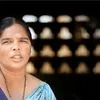[Survivor Series] How I went from working in a brick kiln to getting a Master's degree
In this week's Survivor Series, Khemlal Khaterji talks about how he went from being born in a kiln to rehabilitating other survivors.
My name is Khemlal Khaterji. I am 28 years old and I come from a small village in Chhattisgarh. I have been in and around brick kilns ever since I was a small child. In fact, I was born in one of the brick kilns where my parents worked. They were working in Meerut at that time and were due to go back to Chhattisgarh but I arrived before they could go home.
From very early in my life, I can remember labour contractors coming and taking my parents to different parts of India to work in brick kilns and I would go with them. They could not leave me behind as I was very young, and I did not want to be without them.
I would wait on the site while they worked. Very often, the money they were paid after a hard day’s work was barely enough for us to get by. It was only a matter of time before I was also made to work in the kilns.
The child labourers were treated very badly at these locations. I was beaten, abused, slapped, made to work extra, and received no money. One time, as a punishment, the contractor took a large spoon, heated it with fire, and pressed it against my cheek.
I was made to work nearly 15 to 18 hours a day and was malnourished and exhausted.

Khemlal Khaterji was born in a brick kiln and rescued, with his parents, when he was 13 years old
Image: Shutterstock
There was no hope for an education, and no one helped me. When my parents tried to intervene, they were also just brushed off and threatened. All of us were kept in a tiny room. It was so small that my head would hit the ceiling.
At the age of 13, I was rescued from the brick kiln by a local NGO. It has been a few years now and I am in a better place. I recently completed my education, and I now have a Master’s degree in Social Work from Kalinga University. I live with my family – my wife and child, my parents, my brother, his wife, and children.
Last year, I started a survivor collective called with a few other survivors of labour trafficking.
Initially, we were part of another survivor collective, but we broke away from that when we realised that they were not allowing us to lead. So, we started our own called SAANS (Shramik Adhikar Aur Nyaya Sangathan). It is our endeavour to begin a team that can help prevent trafficking by capitalising on our experience – helping us became leaders in this fight.
SAANS is a part of the Indian Leadership Forum Against Trafficking, which is advocating the government for a comprehensive Anti-Trafficking of Persons Bill. This is important for all of us as there are too many vague laws pertaining to trafficking right now, and a lot of loopholes, which are being exploited.
Last year, when the lockdown was announced, I managed to help 12 workers stuck in a brick kiln in Pathankot (Punjab). I helped them return home by providing coordination and constant communication, providing informational and emotional support.
For now, my mantra is, 'When we know better, we need to do better'. That is why SAAS is important to me.
Edited by Diya Koshy George





![[Survivor Series] How I went from working in a brick kiln to getting a Master's degree](https://images.yourstory.com/cs/5/f5a7f3304b1211e9b6645b8ae897d03e/survivor1-1609134005148.png?mode=crop&crop=faces&ar=2:1?width=3840&q=75)
